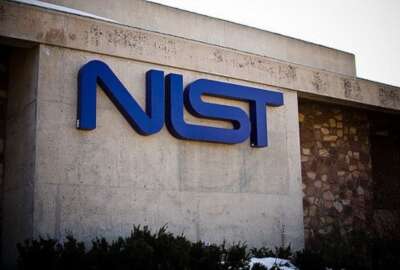Taking the measure of new NIST director
Meet the new director of the Material Measurement Laboratory at the National Institute of Standards and Technology, Kate Beers.
Measuring things is so basic to every advancement, most people sometimes take it for granted. The Federal Drive with Tom Temin talks with someone who does not take such things for granted: the new director of the Material Measurement Laboratory at the National Institute of Standards and Technology, Kate Beers.
Interview Transcript:
Tom Temin And this is measurement and not in the sense of a tape measure or a yardstick material Measurement Laboratory. Let’s begin with what goes on there.
Kate Beers Sure, so it is all in the name. It is a measurement of material; the question is what constitutes a material. And that’s really any chemical or material we manufacture and used that can include anything from a protein used in drug therapy to steel for pipes, and everything in between plastics, commodity products, we measure them, we try to provide the best quality measurements we can. And we supply that information, the methods, the data reference materials to industry and to a lot of other people for whom those measurements matter. So, it can be sub national governments, it can be communities, all sorts of people that benefit from better measurements.
Tom Temin And if you look at so many domains of life relative to 30, or 50 years ago, food, transportation, clothing, building materials, material science has been advancing at least as much as information technology and electronic science. And so, it sounds like there’s a constant need to be able to evaluate new materials, such as coverings on airplanes used to be aluminum. Now they’re composites, car frames used to be forged steel. Now there are these high strength tensile types of things. Correct?
Kate Beers Absolutely. And every field is evolving, and its technology and its innovation. But at the heart of it, everything is built with stuff, right? There’s something that has to be supplied to create the technology, even our semiconductors and computers, or phones, everything is advancing at a very fast rate. And they all require these kinds of references and methods to support the industries and supply chains that are making these products.
Tom Temin And what does NIST try to promote eight then the methodologies for testing or the metrics that testing should produce?
Kate Beers So yes, it’s important to point out that we are a non-regulatory agency that we really do focus objectively on the most knowable information, right. So, the most accurate measurement and its data or the reference, you might need to calibrate your measurement, and we are small. So, we try to be very strategic about providing very specific pieces of information that we think will enable the most advancement, the most innovation, the most robust decision making, we look for those sweet spots in all of the sectors that we interact with.
Tom Temin And with those sectors, say transportation is a common need for them to understand how a material will perform under stress, and over time. And so, measurement methodologies are needed to simulate that wear and tear.
Kate Beers Absolutely, we do some of that work. We also work very collaboratively with other parts of NIST that simulate the effects of aging and weathering. And we’re a very collaborative agency. So, we’d like to bring together these multidisciplinary, the word we use, right, but people that look at these kinds of problems, from very different points of view, to ask the hard questions of, are we really measuring the right thing? Can we do better? How can we help other people do better?
Tom Temin And new and improved? You know, those words are used all over the economy? There’s always new emerging materials in so many different domains. How do you prioritize where the work is that you concentrate?
Kate Beers That’s a great question. And one of my primary responsibilities is to help us plan strategically where we’re going to invest our resources, we do look for the things that seem to be the highest priority to the US economy. And to US manufacturers, we’ve gotten a lot of attention around the semiconductor manufacturing space, the biotechnology space, two of our newest reference materials are a protein, one of the most heavily characterized proteins ever known to man. And the first living reference material, which is a cell we have a reference cell now available, because those are emerging technologies, where measurements are a barrier to commerce, and people need a way to validate their processes and their manufacturing.
Tom Temin Yeah, so even medical advances then are often material advances as much as chemical or technique advances.
Kate Beers Yes, and we’re seeing a bleeding over between those sectors. So, we’re seeing people from the materials and chemicals manufacturing space want to borrow from nature, borrow from the bio space to make things hopefully more efficiently, hopefully with more sustainable practices. So, we need people and measurements ways to measure the performance and the demands of those processes so we can scale them and make them efficient, profitable and safe.
Tom Temin We’re speaking with Dr. Kate Beers. She’s the new director of the Materials and Measurement Laboratory at the National Institute of Standards and Technology. And what kinds of facilities are there at NIST? Do you have big machines that pound on stuff and so on?
Kate Beers We do. Most of our machines are not that big scale anymore. So we have a lot of fancy machines that do things like apply torque and temperature and a lot of hybrid equipment where you can do very specialized measurements and environments where you apply those deformations, we call them right stresses, but do some of the most sophisticated measurements at the same time to understand what’s happening to the material. So yeah, it’s a very diverse laboratory, huge numbers of different types of measurements going on and locations, multiple locations across the country, doing those measurements.
Tom Temin And some of those measurements gets settled because the molecules get rearranged under torque or pressure, not just the shape, but it could weaken or get stronger, this kind of thing that must be tough to really understand.
Kate Beers It’s endlessly fascinating what is happening, we call it we call it field dynamics, right? What is happening to the material over time as its deformed, as it’s maybe inadvertently residing in the ocean for years, what is happening under those forces and exposures, it is a very important problem to understand. And the measurements that we think we do every day, sometimes we’re not getting as much information from them as we might like, yes, bonds can break, new molecules can form and sometimes they can escape and do things you don’t want them to do. And we’re constantly adding more dimensions to our measurement infrastructure to understand that as much as we can.
Tom Temin And of course, industry has its own capabilities for test and measurement, large and small businesses, how do you collaborate and maybe avoid duplication of work, and yet, verify that everyone’s on the same page with respect to the standards.
Kate Beers There are instances where things are very, very expensive and hard to do, and you don’t want to duplicate. So, we have certain very specialized facilities like that, like our metals, deforming facilities. But there’s other things we’re actually some redundancy is really valuable, because we need people doing the same measurement in lots of places to have competence that we’re all getting the same number. There are many methods like that, where you need a very objective unconflicted place like NIST doing what may seem like a fairly ubiquitous measurement, and asking everybody else in the field to do that measurement so that we have high confidence that we’re all doing it the same way, which is not always something you can take for granted. And we do a lot of that work collaboratively. There’s a balance you have to seek between unique capabilities and duplicative capabilities so that you can have trust and effective relationships.
Tom Temin Well, it must be fun to get up in the morning and decide what can I break or wear out today? And how did you come to this work, give us a little bit of a bio of yourself.
Kate Beers It is so fun. Oh, my goodness, we have like the best job, people come here. And they just have the most amazing, fun careers here. I actually have to say I kind of stumbled across this, I did seek my PhD in polymer chemistry. So, I was already interested in soft squishy, you know, amorphous, we call them materials. But I came to NIST as a postdoc. And I was just amazed at how much fun it was to come every day to a place where everyone was just interested in trying to do the best measurement they possibly could on this stuff. And for such good reasons in which such with such immediate value and impact to the US economy in a place that took so much pride in being responsible with its resources and really getting a lot of bang for its buck. You know, sometimes I’m not entirely sure. I feel like I just lucked out coming here. But I’ve had so much support to do so many interesting things and to work with an incredible array of people. I think being a chemist, interested in materials made this a very nice interface for me for my career.
Copyright © 2024 Federal News Network. All rights reserved. This website is not intended for users located within the European Economic Area.
Tom Temin is host of the Federal Drive and has been providing insight on federal technology and management issues for more than 30 years.
Follow @tteminWFED





